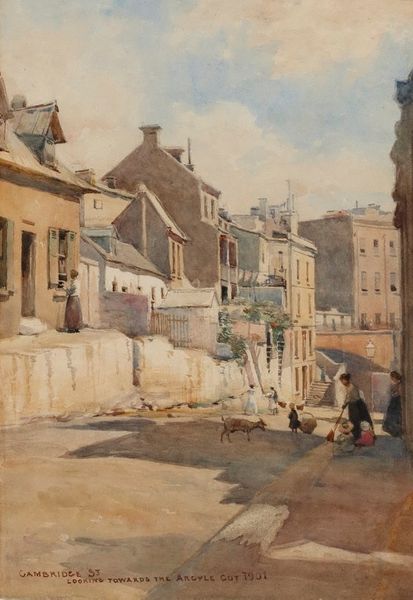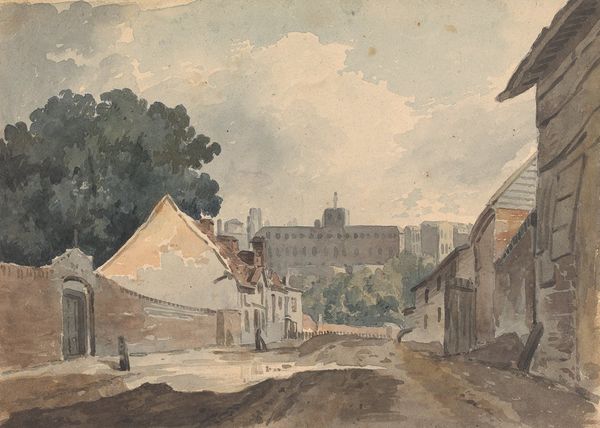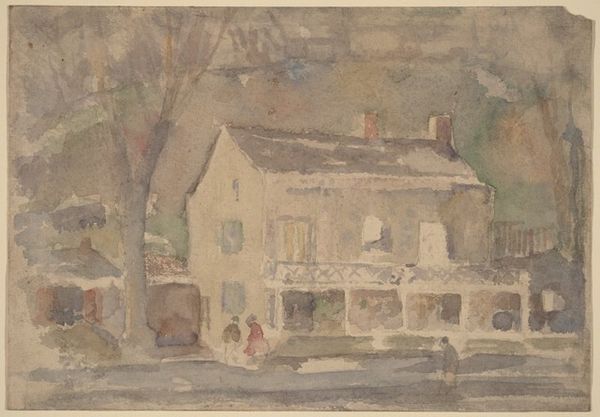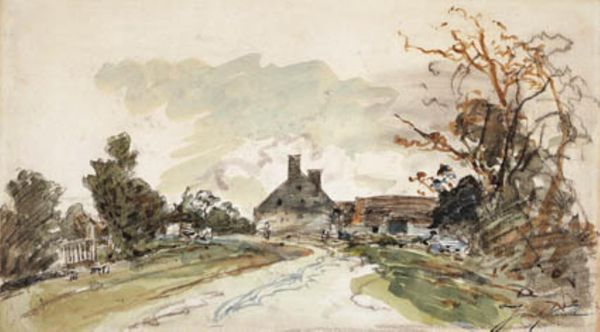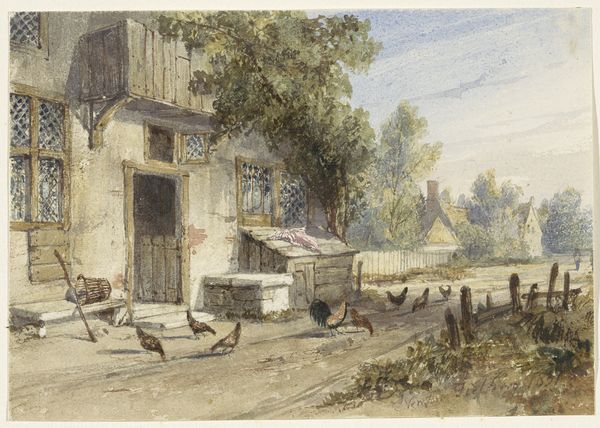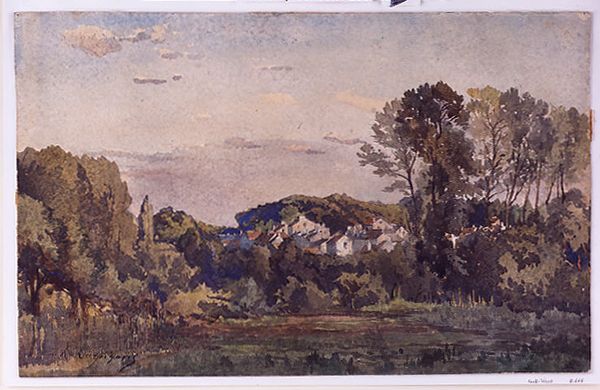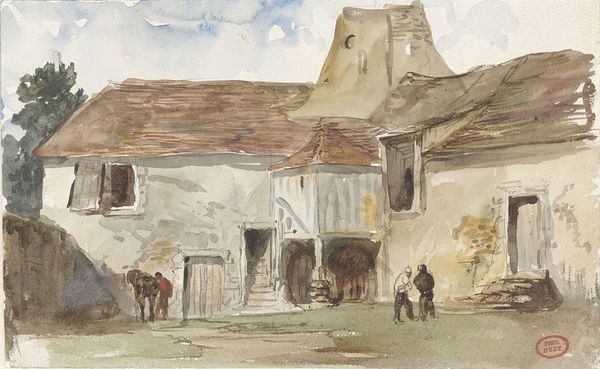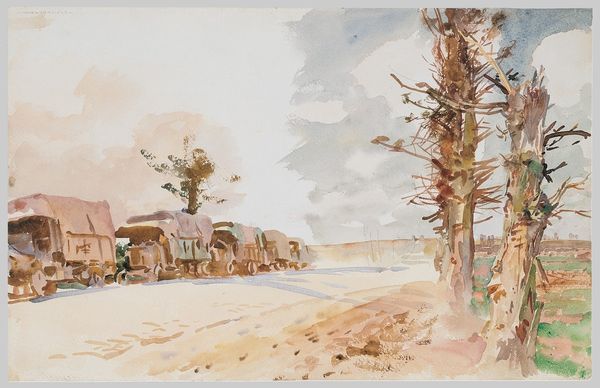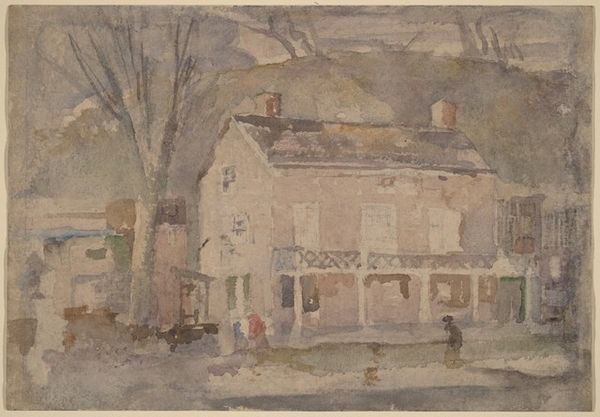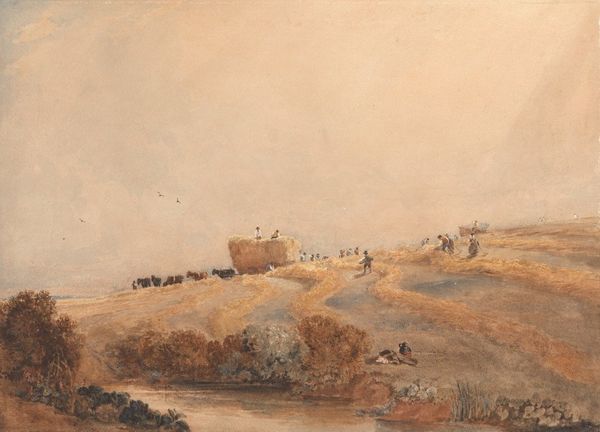
Copyright: Public domain
Curator: Standing before us is Julian Ashton’s watercolor from 1901, titled “Old Houses, Cumberland Street.” It's a rather charming scene. Editor: Charming, yes, but tinged with a certain melancholic air. The colours are muted, almost sepia-toned. The long shadows suggest a late afternoon light, lending a wistful quality to the urban landscape. Curator: The street feels palpably empty even with the presence of figures in the foreground. Do you read any deeper significance into Ashton's representation of a cityscape so plainly focused on older architecture? Editor: Absolutely. The older homes evoke a sense of the past – of a bygone era clashing against the modernization, perhaps even the urban decay that occurs as society inevitably marches forward. He immortalized that reality. Notice also how the buildings on the higher ground seem to overshadow the street level where more pedestrians can be seen. Curator: There’s also a quietness, almost pastoral quality juxtaposed against a hard-working environment, I perceive, in the figures in the distance and their quiet determination going about their everyday life and working alongside horses in harness. These, I suggest, are strong indications of an awareness of memory within community. The presence of chickens along the lower ground further emphasizes the coexistence between man and nature. Editor: I agree about the coexistence of the natural and man-made but Ashton’s choice of vantage is fascinating, capturing how socio-economic realities literally build up and create visible hierarchies within urban spaces, impacting the perception and memory of communities inhabiting these locales. The shadow dominates in ways the architecture doesn't. Curator: Considering that Ashton embraced plein-air painting and that this study might be connected to impressionism, the scene, which otherwise looks photographic, does imply much deeper significance than a mere genre-painting could hold. The symbolism feels tied to something tangible here – maybe the changing social structure. Editor: Exactly! The technique mirrors the era’s uncertainty with the evolving urban experience. And given that he renders buildings as old as 1800s, there’s indeed an interplay between private history of owners and its significance with the local community. Curator: I appreciate the depth of connection between public and private that the imagery captures. Editor: A powerful snapshot of society at the crossroads, a moment where social order is clearly visible within the natural development.
Comments
No comments
Be the first to comment and join the conversation on the ultimate creative platform.
